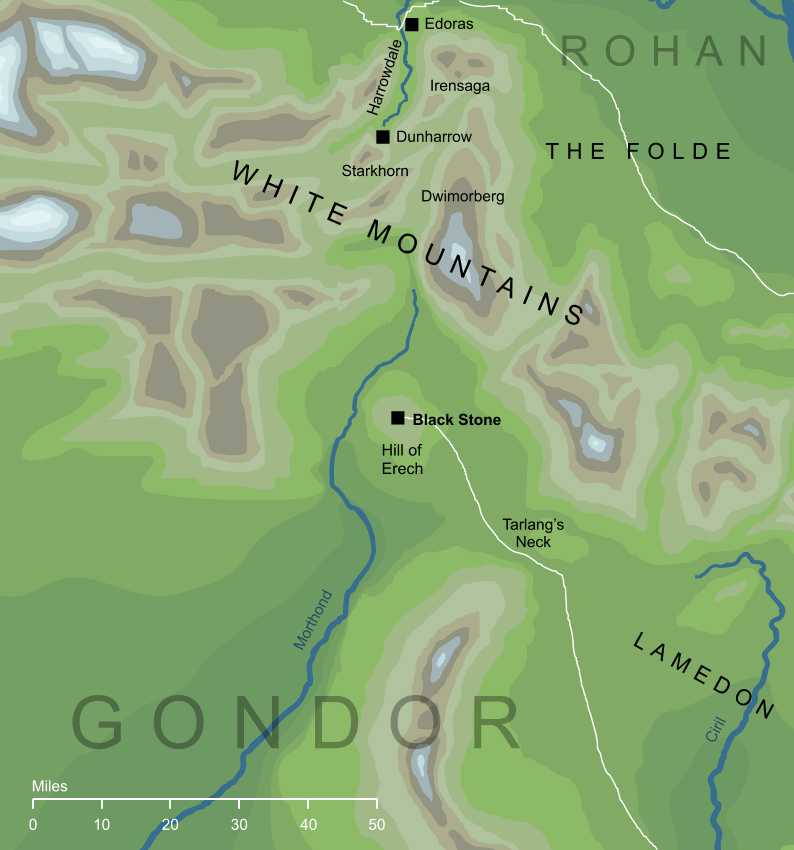- Cities and buildings
- Fields, plains and deserts
- Forests
- Hills and mountains
- Islands and promontories
- Lands, realms and regions
- Rivers and lakes
- Seas and oceans


|
||||
|


Which personality type are you?
Take the Free mydiscprofile Personality Test to discover your core personality and your ideal job.   Which personality type are you? |
|
Dates
Set on the Hill of Erech in II 3319 or soon afterward
Location
Origins
Race
Division
Culture
Family
Source
Important peaks
Stood on the Hill of Erech
Other names
|
Black StoneThe Stone on the Hill of Erech
An immense globe of black stone, more than three metres1 (ten feet) in diameter, that was sunk into the ground at the summit of the Hill of Erech near the head of the Blackroot Vale. It was brought by Isildur from Númenor and set on the Hill as a mark of his lordship over the lands around Erech (though its alien appearance caused some to speculate - wrongly - that it had fallen from the sky). It was on this stone that the King of the Mountains swore allegiance to Isildur in the closing years of the Second Age. When he refused to fulfil that oath in the War of the Last Alliance, Isildur cursed him and his people to dwell as Shadow-men beneath the White Mountains. The ghostly forms of these Dead Men would gather at times around the Black Stone, and it was there that Aragorn brought them in the War of the Ring, granting them the chance to finally fulfil their allegiance to Isildur's Heir and be released from Isildur's ancient curse. Given the size and weight of the Black Stone, it must have been remarkably important to Isildur for him to carry it out of the wreck of Númenor. It is hinted in early drafts of The Lord of the Rings that the Black Stone was a palantír, which might have explained Isildur's need to bring it aboard his ship (as well as its spherical shape) but in the final version the Stone of Erech is certainly not one of the Seeing-stones. Other sources suggest that it was perhaps brought to Middle-earth at some earlier time, but the text of The Lord of the Rings leaves little room for such explanations: '...it had been been brought out of the ruin of Númenor and there set by Isildur at his landing.' (The Return of the King V 2, The Passing of the Grey Company). Perhaps it had some other forgotten power or property that made it so important to Isildur (in principle it may even explain how he was able to lay his remarkable curse on the Men of the Mountains) but if so no record remains. Notes
See also...For acknowledgements and references, see the Disclaimer & Bibliography page. Original content © copyright Mark Fisher 2016. All rights reserved. For conditions of reuse, see the Site FAQ. Website services kindly sponsored by Discus from Axiom Software Ltd.DISC The Complete Introduction takes you from core ideas to advanced DISC interpretation. |